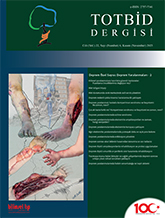
On February 6, 2023, a vast area was devastated by the most destructive earthquakes of this century. Thousands of people lost their lives and hundreds of thousands were injured. Many different types of injuries were seen in the earthquake victims who were rescued from the rubble. In earthquakes that have occurred all over the world, it is seen that injuries and disabilities are much higher than deaths. While musculoskeletal injuries are the most common, the majority of them are soft tissue injuries. Many different types and characteristics of wounds can be encountered, from simple abrasions to very large, infected, necrotic open wounds, especially on the extremities. Even if the primary treatments of these patients are completed, chronic wound treatments will continue for a long time, and the treatment process will require intense labor and patience. The first step for wound healing is debridement and cleaning the wound. Surgical debridement is the debridement method that should be preferred because it can get sufficient results in a short time. Many different methods and wound care products can be used for wound care after debridement. Negative pressure wound therapy (NPWT) is commonly used in difficult wound management in our country and all over the world. Silver-containing wound care products should be preferred especially for infective wounds. Wound care should be customized according to the condition of the patient and the wound, and the patient should be evaluated as a whole.